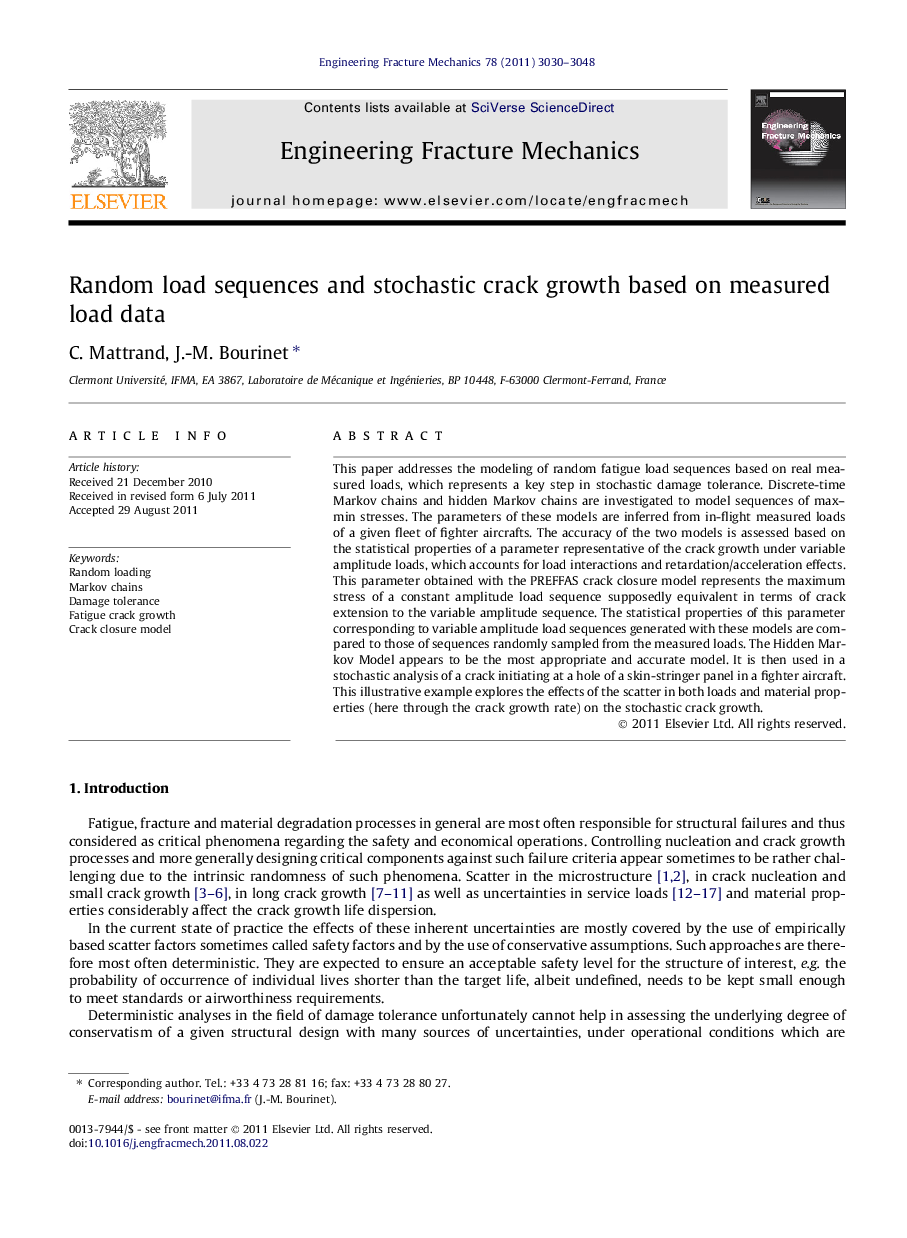| Article ID | Journal | Published Year | Pages | File Type |
|---|---|---|---|---|
| 771077 | Engineering Fracture Mechanics | 2011 | 19 Pages |
This paper addresses the modeling of random fatigue load sequences based on real measured loads, which represents a key step in stochastic damage tolerance. Discrete-time Markov chains and hidden Markov chains are investigated to model sequences of max–min stresses. The parameters of these models are inferred from in-flight measured loads of a given fleet of fighter aircrafts. The accuracy of the two models is assessed based on the statistical properties of a parameter representative of the crack growth under variable amplitude loads, which accounts for load interactions and retardation/acceleration effects. This parameter obtained with the PREFFAS crack closure model represents the maximum stress of a constant amplitude load sequence supposedly equivalent in terms of crack extension to the variable amplitude sequence. The statistical properties of this parameter corresponding to variable amplitude load sequences generated with these models are compared to those of sequences randomly sampled from the measured loads. The Hidden Markov Model appears to be the most appropriate and accurate model. It is then used in a stochastic analysis of a crack initiating at a hole of a skin-stringer panel in a fighter aircraft. This illustrative example explores the effects of the scatter in both loads and material properties (here through the crack growth rate) on the stochastic crack growth.
